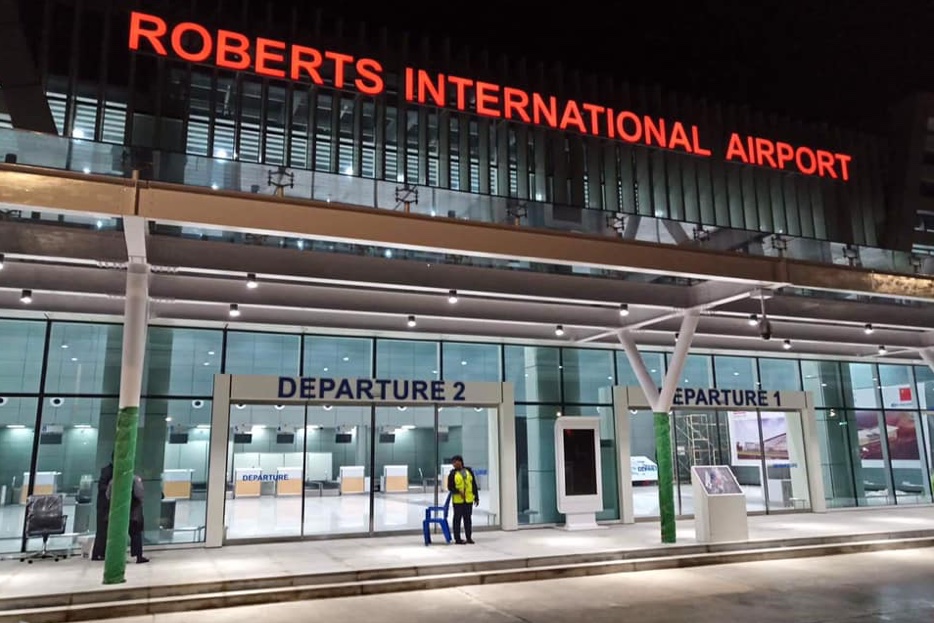
By Jusu Gow
Urgently needed: A team of aviation business management (ABM), safety, and operations professionals!
With the recent announcement of Brussels airlines to suspend flights to Liberia due especially to the lack of adequate navigational aids (NAVAIDs) to support the critical instrument landing system (ILS), it is important that the RIA management and concerned authorities invest heavily in the acquisition of those needed equipment. However, purchasing the required NAVAIDs is one thing, maintaining it is another thing altogether. It is now evident that RIA has a lot of work to be done and hiring a managing director alone may be necessary. Moreover, hiring a team of specialized aviation professionals will be sufficient to give the airport the lift it needs to be on par with other regional airports and in compliance with the International Civil Aviation Organization (ICAO).
Aviation business management (ABM) professionals understand how to generate revenue from existing airport space and land. They also understand human resources (HR) and the human capacity required to achieve optimum service delivery at the airport. Airport space especially terminal space can be a huge source of revenue. Unlike many decades ago when airport terminals serve the purpose of arrivals and departures, modern airport terminals have now become a big business arena somewhat synonymous to a shopping mall. With this reality the team of ABM professionals could lease terminal space to various concessionaires to optimize revenue. They can have concessions with Liberian and international based businesses to diversify the traveling consumers’ options.
Prior to the onset of the Liberian civil war and up to the mid-80s the iconic American airline Pan AM did manage the entire RIA under a concession with the Liberian government. The ABM could look into the possibility of similar concession say with their longstanding partner Brussels Airlines (SN) and SN could sublease to other companies. As long as revenue is generated enough to cover operational, managerial and maintenance expenses of the airport, such concessions could be something RIA may consider moving forward. The ABM team should also emphasize the HR need of the airport. In order to continually achieve optimum service delivery, employees have to be consistently trained especially in line with best practices in the aviation industry. Trainers have to be hired and training packages that reflect good customer service and safety have to be developed.
The ABM team could also generate revenue from existing land space for such concession agreement with fixed-based operators (FBOs), freight handling, tie- down, hangars, rental cars and other aviation related businesses on the airport premises. The goal is to make RIA revenue independent since most airports are self-funded and autonomous.
Now let us talk about operations and safety:
Operations and safety work hand-in-hand with the daily running of an airport, but for the case of RIA I will suggest having each streamlined to specific duties. In this case the operations team will be tasked with the oversight responsibility of running the terminal. From the general public view the terminal is a place to wait for or disembark from a flight, but from the aviation standpoint the terminal is more than a waiting space. The terminal is a place of very high traffic which in itself is a security structure that serves as a barrier between landside and airside. There are certain areas of the terminal that are off limits to the traveling public and can only be accessed by authorized personnel; therefore, it is the duty of the operations team to ensure that those areas remain “sterile” at all times. It is also the duty of the operations team to ensure that airport tenants are adhering to the security rules as written within their contracts. Operations will also be responsible for terminal maintenance and power (electricity/fuel).
In the United States the Transportation Security Administration (TSA) and the local city work together to enhance the overall security of the airport under federal code 49 CFR 1542 (Airport Security). As part of its functions, the TSA screens the traveling public to prevent unauthorized items in the terminal area and on the aircraft. The TSA also ensures that jetway doors are only accessed by authorized personnel and in case of a security breach or an unattended bag situation, both the city representatives and the TSA liaise with the local police department to provide extra line of screening and security which in some cases prompt a lockdown and the use of K9s. The RIA operations team can perform in the same way to ensure the terminal is always secured.
I am discussing safety here is in the context of everything that needs to be done on the airside to keep flight operations running seamlessly. RIA will only continue to generate revenues when there are non-stop flight activities. When NAVAIDs are purchased and installed with millions of United States Dollars, it is important that the safety team ensure those equipment are maintained through inspections at various times of the day to ensure it is working properly. Trained technicians need to be hired to address any malfunctioning of those NAVAIDs in a timely manner. What RIA does not want is a continuous repeat of what happened to Brussels Airlines recently or that of what happened in April this year when the aircraft had to abort landing and was rerouted to Sierra Leone due to poor runway lighting.
The safety team will continually observe and fix any issues with the NAVAIDs and in the case of a technical glitch, RIA can timely issue notices to air missions (NOTAMs) for scheduled inbound traffic. In my opinion it is better to have a delayed or cancelled flight than for an aircraft on an initial approach to find out that the glideslope is malfunctioning or PAPI is not calibrated to the right angle due to it being struck by wildlife.
In addition to revenue and safety, running an airport is all about good public relations (PR); therefore, a cancelled or delayed flight does not affect an airport image compared to a widely disseminated problem of malfunctioning NAVAIDs and a group of passengers (and their loved ones) who are angry and take to social media because they were inconveniently flown to another country as a result of poor runway lighting at their airport of destination.
With all that has happened recently, RIA needs to be on top of her game; therefore, the management does not have to only address existing problems, but need to make sure that other problems do not come into existence.
In this light, the safety team will also need to keep up with other airside safety indicators such as having a functional aircraft rescue and firefighting (ARFF), maintaining vegetation (especially grass) at a required level, wildlife management, fixing runway potholes, ensuring apron, runway and taxiway markings are visible, making sure airport fencing is intact.
Best safety practices stipulated within the United States Federal airport certification regulations, 14 CFR Part 139 (Airport Certification) could serve as a guide to establish or enhance the airside safety indicators I have listed above.
RIA may already be doing some of what I have suggested here, but they could optimize on existing projects and become creative with new ideas aimed generating more revenues and enhancing safety. RIA needs to understand that optics is everything and it does not benefit management (and the government) that “bad news” is always coming out of Liberia’s lone international airport.
My suggestions here are not exhaustive of the functions of the three recommended teams; however, it could serve as a point of reference to address the gravity of needs RIA is currently faced with and a way forward to get it moving again.
Jusu Gow
Master of Science in Aeronautics (MSA)
Embry Riddle Aeronautical University
jgowus@yahoo.com















